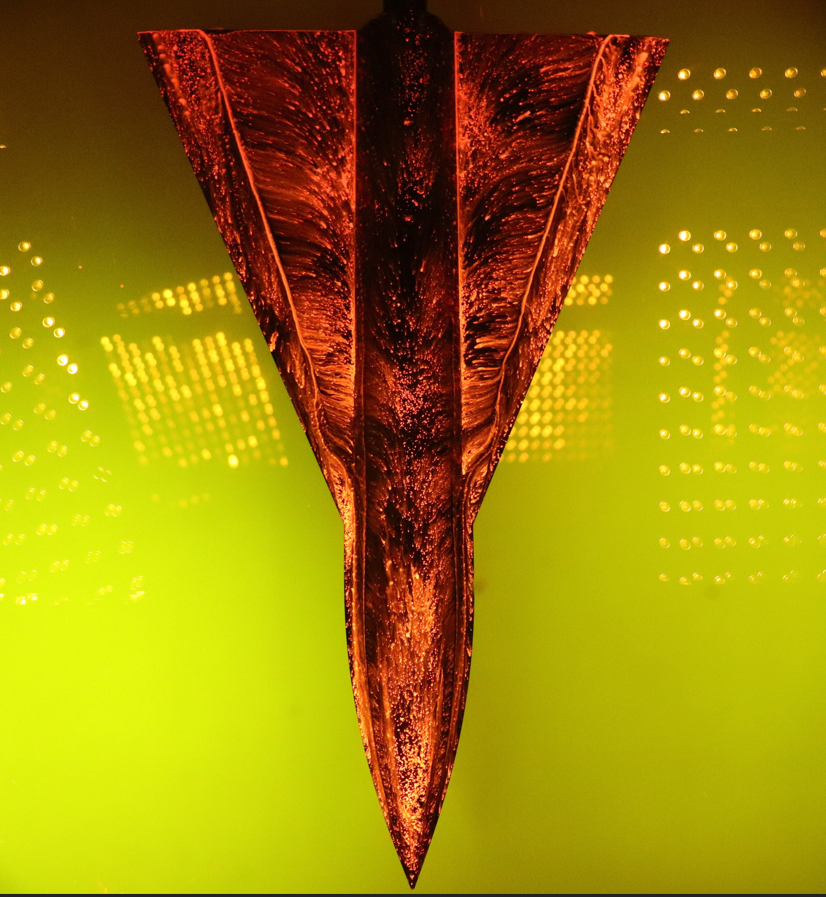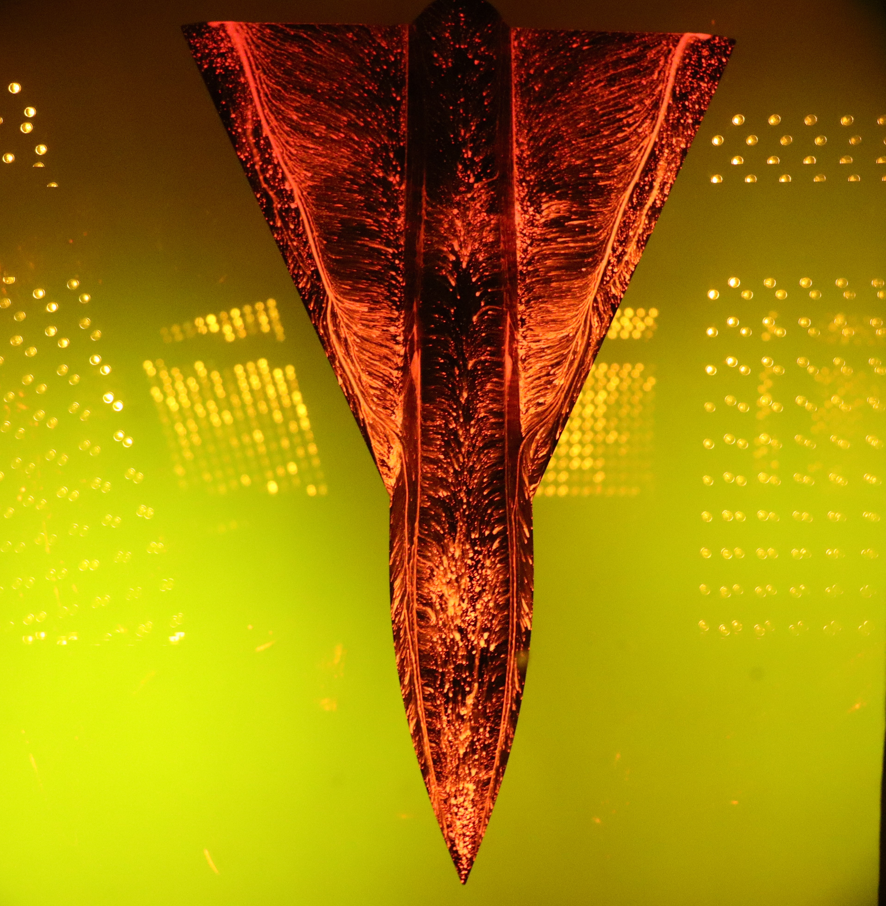Fifth-Generation fighters such as the F-22 and F-35 favor chine-shaped forebodies which help reduce their Radar Cross-Section. The chine produces strong forebody vortices, which interact with the wing vortices. However, in certain conditions the interaction can produce asymmetric vortex breakdown, non-linear moments and roll departure. Future fighter aircraft will have this issue compounded as, to further reduce their RCS, future-generation fighter aircraft are projected to be tailless, sacrificing lateral control authority.
The objective of the project to explore ways to control the onset, formation, and development of these forebody vortices to, in turn, control the nose-up pitching moment contribution at moderate to high angles of attack during takeoff and landing, as well as lateral control in these flight regimes. The project contemplates experimentally analyzing the interactions of different flow control actuators with vortical structures, characterizing the vortical structures around chined forebody-delta wing geometries and integrating this information to effectively manipulate the vortex dynamics around the aircraft.

Figure 1: Oil flow visualization at 20 degrees of pitch, 0 degrees of yaw, and 0 degrees of roll.

Figure 2: Flow visualization at 30 degrees of pitch, 0 degrees of yaw, and 0 degrees of roll.
Flow visualization at 30 degrees of pitch, 5 degrees of yaw, and 0 degrees of roll.